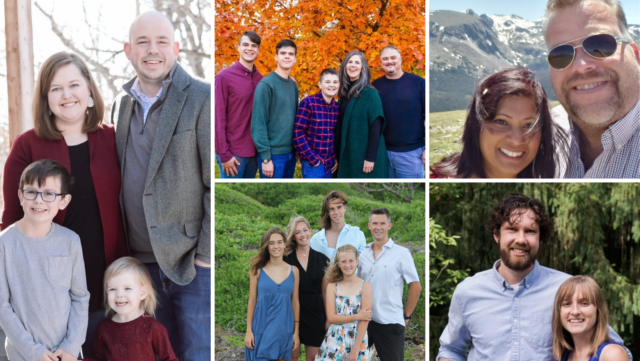
There are so many really compelling reasons to pray about, to consider, to seek the Lord for your church’s future in terms of engaging in the multisite movement. If you’re thinking about sending out a multisite, here are a few questions to work through:
Evangelism: Would extending to multiple sites advance the mission God has given my church?
What most churches emphasize is that their primary reason for existing is to reach people for Christ. If so, multisite evangelism can greatly advance that cause. The ability to reach people in their local context is far greater when you’re putting these ‘local little churches’—which is how they are really operating—in their neighborhoods.
That’s where the 20-minute drive-time barrier makes a big difference. The average person no longer really wants to drive more than 20 minutes. When you talk about inviting your unchurched, maybe unsaved, neighbor to come to church, and ask them to drive 25 or 30 minutes, what we often see is that people might be willing to come to an Easter or Christmas Eve service. And they may love our church and think it’s great, but the reality is, they are unwilling to commit every week to come and participate.
We lose our opportunity week after week to witness to them in the Sunday weekend context. Believers who are involved in a multisite launch can take on a very missional mindset and begin to take ownership of the power they have to reach out to their neighbors, co-workers and friends. They begin to say, ‘I’ve got somewhere I can take these people.’
Discipleship: Will the closer proximity create a context for all types of people to grow?
As an example of the importance of proximity to a church body is youth ministry. How many parents can’t afford to drop their kids off 30 minutes away and then pick them up later to drive them home? We’re seeing participation levels in youth groups and small groups drop when there’s this large drive time. It’s an absolute barrier, especially for opportunities during the week, he explains. But when campuses come into the communities and the drive time lowers to 5 or 10 minutes, participation levels rise.
And it’s not just participation in classes or small groups that increase, but also participation in serving and giving financially. All those things that we would measure in terms of the question, ‘Is someone becoming more of a mature follower of Christ?’ come up on the discipleship scale when you have the proximity for them to be able to participate.
Leadership Development: Could everyone actually get to play?
One of the core values of the Vineyard is that everyone, leader or layperson, can actively enter into what God has done and is going to do. At Vineyard Columbus, multisites aren’t immediately staffed with a group of people; they grow and then are staffed at the level of need. That requires a lot of different people to step up and serve in the initial launch stages of a multisite campus.
When planning for the Sawmill Campus began, Corey brought a grid with 75 or 80 open role slots to the campus interest meetings and told people, “If we don’t have people that feel called to participate in these roles, we can’t do this thing.” Now, around 120 people run the whole campus in every kind of role imaginable; the church is largely volunteer-led. And people’s skill sets are being challenged and expanded as a result.
Oftentimes, in our larger churches, there is this tendency: The average person sitting in the pew looks at the size of the church and maybe says, ‘I’m sure it’s taken care of. I’m sure they’ve got it covered. There is this real assumption of, ‘They don’t need me.’ Unless they ask the leaders directly. In contrast, the campuses immediately create a context to say, “We need you. This doesn’t happen without you. Will you come and be on mission with us? And as you’re on mission with us, you will develop those gifts that God has put inside of you.”
Practical Needs: Could my church benefit from space, size and cost considerations?
If a church is having a hard time fitting in 50 more chairs … if a church has gone to two services, then three … if pastors are burning out preaching too many messages a week … it can be hard to keep up the pace. Just by opening another location, we begin to see some of that pressure released, and we create more room for new people. We know that when new people come in and see a room more than 80 percent full, they automatically assume there’s no room for them. We’re sending them a message that we don’t intend to send them. By starting campuses, we create more room at the new location as well as the original location so more people can come in and feel welcome.
Stewardship is another practical need that can be positively affected by a multisite. Some newer studies have shown that dollar for dollar, it’s much cheaper to connect a person with Christ using a multisite plan than by church planting. Of course, there’s room and need for both in the Vineyard. But taking a good look at the cost analysis, a multisite campus can and should be a viable option.
Logistically, one further advantage a multisite church can provide is to retain the “family feel.” We offer people sort of the ‘big-church quality’ with resources and ministry and preaching, but with that small church family community feel. You get the blend of the best of both worlds in that place.
Is there anything we’re missing? Any other questions you must consider? Let us know in the comments. If you want to learn more about discerning whether you’re called to plant a multisite, check out this Discovering If Multisites Can Work For Your Church webinar recording.
 Corey Garris joined the Multiply Vineyard team in 2014 to lead our multisite coaching and resources team. Corey has had years of experience supporting and developing multisite churches across the country. Corey is also is Chief of Staff at the Mile High Vineyard. Prior to working at MHV, Corey oversaw the development of campuses at Vineyard Columbus, was a campus pastor himself, and also helped send out church plants.
Corey Garris joined the Multiply Vineyard team in 2014 to lead our multisite coaching and resources team. Corey has had years of experience supporting and developing multisite churches across the country. Corey is also is Chief of Staff at the Mile High Vineyard. Prior to working at MHV, Corey oversaw the development of campuses at Vineyard Columbus, was a campus pastor himself, and also helped send out church plants.










